Innovation is the cornerstone of any company aiming for long-term viability. The importance of continually upgrading existing products and introducing new products that fulfill market demands and needs cannot be understated.
However, corporate innovation efforts can be often be confused with research and development efforts. That is, innovation efforts can often focus on finding a solution first, before beginning to look for problems that this solution can solve.
For corporates, this issue can be a consequence of a company’s success, as large R&D budgets allow the luxury of creating new technology without a pre-defined market.
However, this trajectory can ultimately eat away at budgets and can be harmful to teams who become too focused on building solutions, rather than understanding problems.
Startups have a completely different set of challenges. Most early-stage startups lack the resources to build proper solutions. Instead, they focus their limited resources on understanding problems. They can then use tricks such as spoof landing pages to validate demand for particular products.
Only when a need is well-established do these startups look to raise funds to build a workable solution. It is no surprise then that the solutions that startups build are often better suited to their markets than those built by corporates. They are built AFTER the problem is understood, not before.
With that being said, startups can also fall into the solution-first mindset. If they are given too much money too early, they can tend to build solutions that are ill-fitted to the market. Just look at Quibi, which managed to burn through $1.5 billion in investor money before getting a product to market. It was no surprise then that nobody ended up wanting to actually pay for their product.
Corporates should certainly not abandon their R&D efforts. They are essential for sustaining the existing business, and they provide a competitive advantage in building solutions when real problems are defined. However, these efforts cannot get in the way of innovation. Lean efforts that focus on understanding customer problems are often more successful in discovering the next generation of growth opportunities.
How your company can structure innovation efforts for the best results
There is an oft-quoted line from Albert Einstein that goes, “If I had one hour to save the planet, I would spend 55 minutes finding the problem and five minutes solving it.”
It’s a simple quote but it gets to the root of the iceberg effect of successful businesses, which spend much more time doing market research and engaging with their customers to find out what they really want in a product.
The consequence of creating a solution for a problem that doesn’t exist is pretty simple: you run the risk of failing to find a market for your product and losing money that was spent on R&D and product development.
While deep-pocketed corporates can often withstand the impact of solution-first product developments, for a lean start-up, this can be a disaster.
It’s important, then, for innovation teams to ensure that employees are in the habit of thinking about their problem-solving methods, and the problems that they are attempting to solve.
For a lot of companies, the problems that they are attempting to solve come from different angles.
On the one hand, your company is likely looking at customer behavior and the feedback that is coming from potential customers, evaluating how people interact with your product, and evaluating whether there is an aspect that is missing from their experience with your product.
On the other hand, your company likely has pre-established ambitions, as well as a roadmap that shows the pieces that are missing from your business.
In order to meet the demands for innovation, it is helpful to establish an internal system that can track innovation efforts effectively, and which encourages internal innovation within your organization.
In this case, we can use something called the Innovation Funnel.
The Innovation Funnel is a process that encourages innovation and ensures that the ideas being developed within your organization are meeting a variety of needs.
Before implementing the innovation funnel, however, your organization should define its relationship with ideation and ambition. This means, how much of the innovation process is devoted to meeting customer needs and how much is devoted to achieving company ambitions.
This process is broken up into a few different steps:
The initial phase of innovation is ideation, where we ask ourselves questions like: What does the market need? What do our customers need? What do our partners demand?
The next phase outlines where these ideas can be implemented and how they can be optimized for the market. We can call these structures Where to Play and How to Win, respectively.
The final stage focuses on initiatives and enablers which will help define the next steps in setting up processes that move innovation forward.
With these factors outlined, we can then move forward to the Innovation Funnel, with our pre-defined aims already established.
Let’s take a closer look at the Innovation Funnel in the graph below:
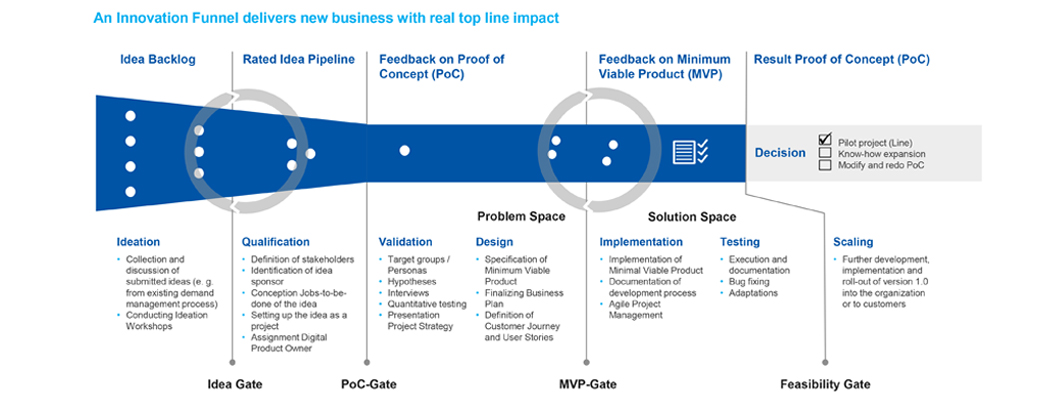
As you can see, ideas travel into the funnel and are required to pass through a variety of gates in order to be launched for the market. These gates help your organization weed out ideas that do not serve your customer base or your company's ambition while ensuring that your organization does not waste time on ideas that do not serve a purpose.
These ideas go through a process of:
- Qualification
- Validation
- Design
- Implementation
- Testing
- Scaling
By implementing a stricter vetting process for ideas, organizations avoid the pitfalls that can often come with innovation efforts, such as large yield losses or wasted resources.
In order to ensure that a company has a steady flow of ideas, all employees should be encouraged to ideate and submit new concepts. This can be achieved by building cross-functional teams that are in the practice of meeting regularly to formulate new ideas.
Beyond this, we can build structured matrices that measure the intersection of Where to Play and How to Win, which helps when giving stakeholders evaluations of a company’s needs and aims.
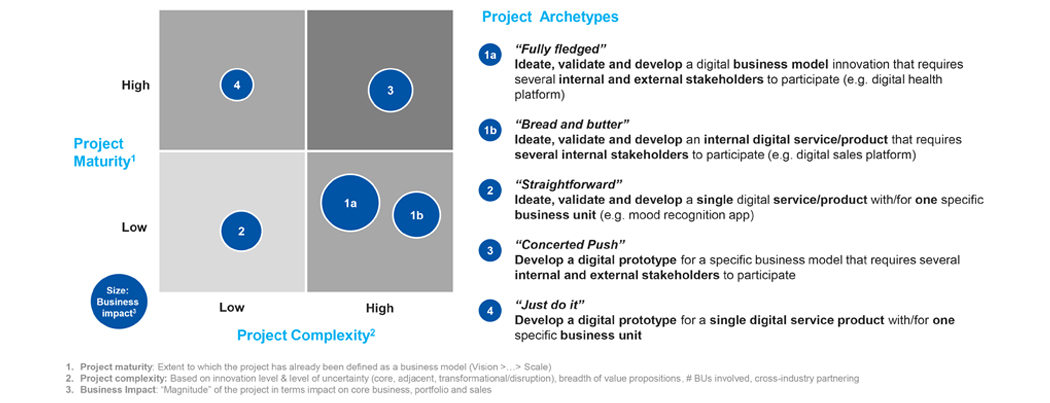
Furthermore, these projects can also be tracked using a matrix in terms of their maturity and their complexity.
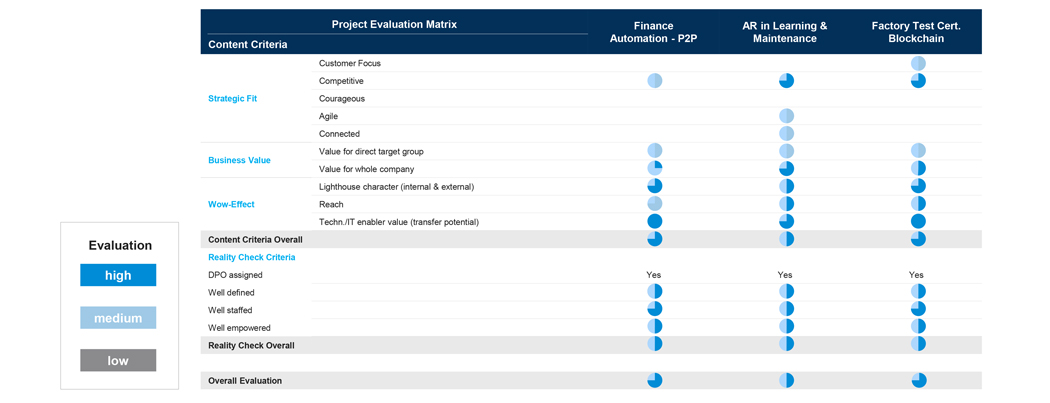
When building out multiple projects, these should be tracked in a matrix that compares the various KPIs, in order to maintain full transparency. By doing this, an organization can easily compare the strategic fit, business value, and WOW-effect of differing projects.
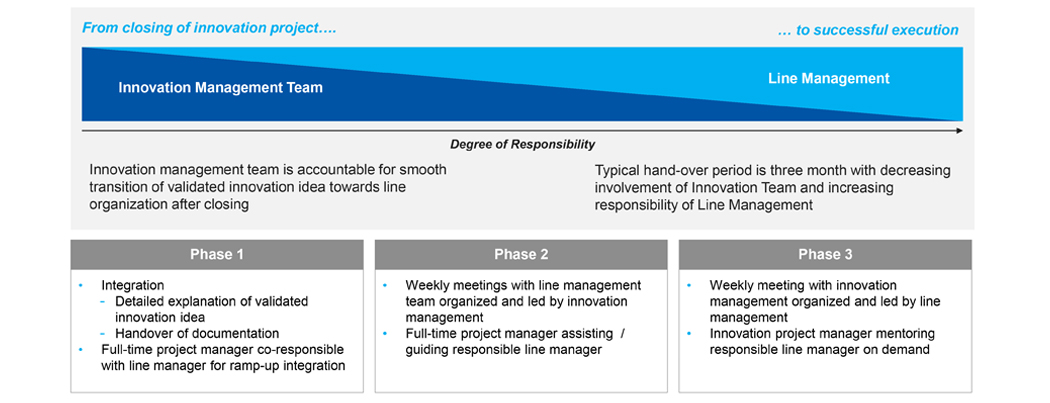
Finally, when a project has been successfully validated, the innovation management team can begin the handover process, transferring ownership of the project to the line management, a process that can take around three months, with the involvement of the innovation team gradually decreasing, and involvement of line management team gradually increasing.
The Innovation Funnel is an excellent way of charting ideas and the progress that these ideas make. Within this structure, however, it’s also important to ensure that stakeholders know their roles and are equipped to attain different goals.
The RACI Model
When innovating and working on product development, it’s essential that all members of the team are aware of the role that they are playing and of the different aspects of product development that they are involved in.
One of the best ways to track employee efficiency is with the RACI model. This is a responsibility assignment matrix that outlines the various roles of participating stakeholders in a project. It is, in essence, a means of ensuring that each stakeholder is aware of their responsibility in a project.
Each letter of the acronym RACI stands for a different scope of responsibility:
- Responsible
- Accountable
- Consulted
- Informed
Each of these roles takes a different portion of responsibility within a given project.
Responsible: The person who is responsible for successfully completing a project task.
Accountable: The person with the authority over the successful completion of a task.
Consulted: A consulted party is someone who can give unique insights into a particular phase of a project.
Informed: An informed party is someone who is not directly involved in a project but who should be kept in the loop.
Let’s take a look at one example of a RACI model in action.
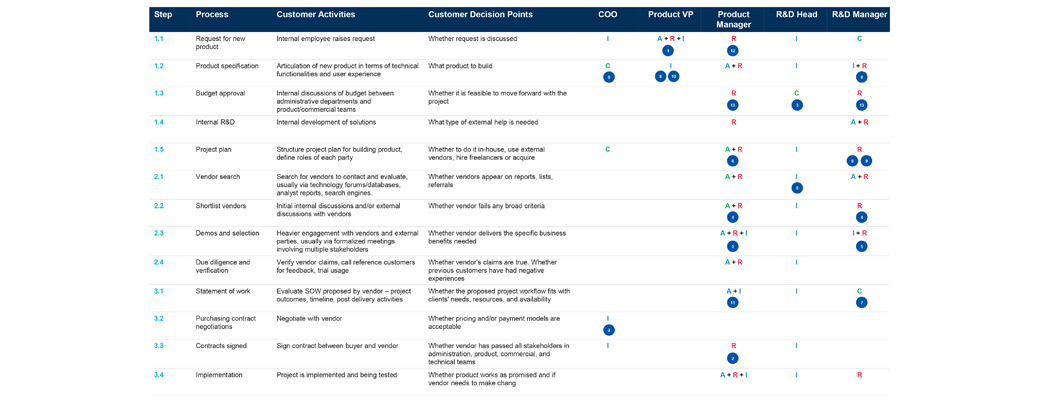
As we can see from this graph, the product manager and R&D manager take the lead on the majority of aspects in this particular project, while other members of the team, including the R&D head and COO stay informed throughout the process.
So what’s the benefit here for project management? There are many, but the most important advantage of using a RACI model is that stakeholders can stay aware of the various facets of a project through detailed mapping, which applies to the differing roles of stakeholders, the activities that these stakeholders are undertaking, and pain points within the process that may reveal blind spots in management awareness.
In addition, by establishing the decision-making authority at the beginning of a project, an organization can help to reduce bottlenecks and internal uncertainty among team members. More specifically, this model clearly outlines the functional roles and responsibilities of each stakeholder across major tasks within a new project.
Finally, this model gives a clear route to completing the project, with each member of the team aware of their roles, and aware of who they should hand off to when they have completed their part of the project.
Within this RACI Model, we can track different pain points and objectives using a matrix that charts viability. By using this model, an organization can clearly see high-priority issues that need to be tackled in order for a project to move forward.
Take a look at the graph below for an example of what this matrix would look like:
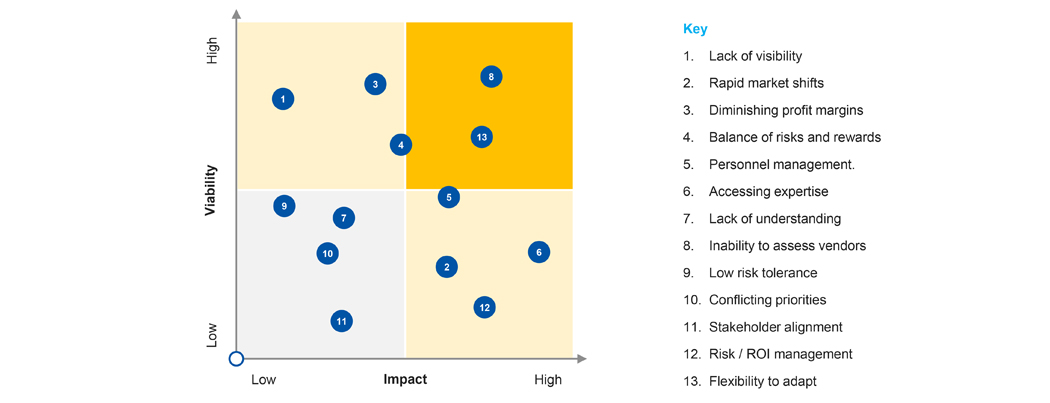
Furthermore, tracking roles and activities within an organization can provide a quantitative basis for setting and measuring improvement objectives and identifying initiatives that further digitization at a company.
Within the following graph, we have assigned each sector of an organization an equal space, and under four different headings, the roles that these sectors play have been analyzed.
While the nature of the analysis of each role is up to each organization individually, it’s helpful to look at this example:
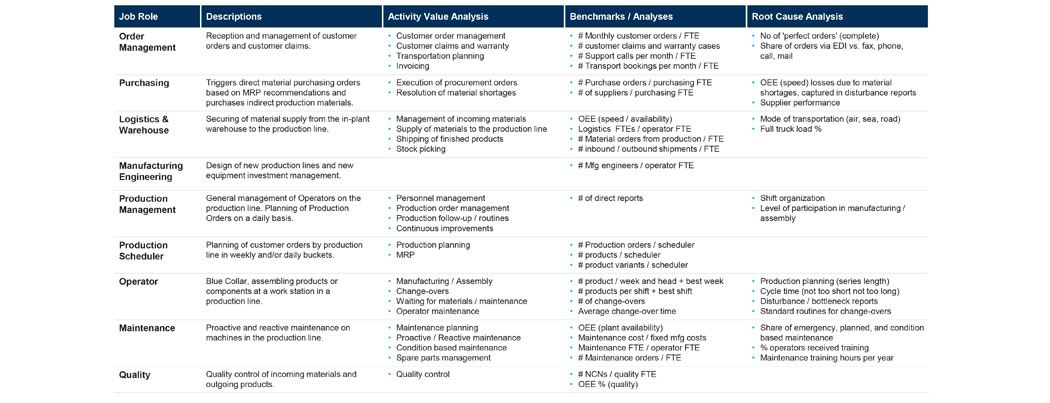
Here we can see that each role has been described, given an activity value analysis, KPIs or benchmarks to be met, as well as a root cause analysis.
These varying aspects of a company’s organizational behavior ensure that innovation, project management, and ultimate deployment of new products can be carefully managed and analyzed.
There are countless recent examples of companies solving the wrong problems. There are also countless examples of companies solving the right problems, or creating solutions for problems that customers did not even realize existed.
Take, for example, the Chinese market, where consumer-focused products have exploded over the past decade or so. Meituan created a mega-app that connected users with food delivery, restaurant reviews, cinema tickets, hotel bookings, and much more. Alibaba and Tencent understood the convenience that cashless payments would bring to the lives of consumers. Pinduoduo created a group-buying craze, where consumers can buy products in bulk for a cut-rate. All of these companies paid attention to their market and created the right product at the right time.
To ensure that your organization is working with a problem-solving mindset rather than a solution-first mindset, it’s essential to incorporate strong internal planning and organization. While this may seem like a resource suck in the beginning, by clearly establishing models for employees to use, and by identifying priorities early on, a clearly defined innovation funnel and a RACI model can ultimately help a team to carry out projects that address internal ambitions and customer needs quickly and efficiently.
IoT ONE Insights
Download PDF.
Thank you for downloading PDF!
PDF report was sent successfully to your inbox.




